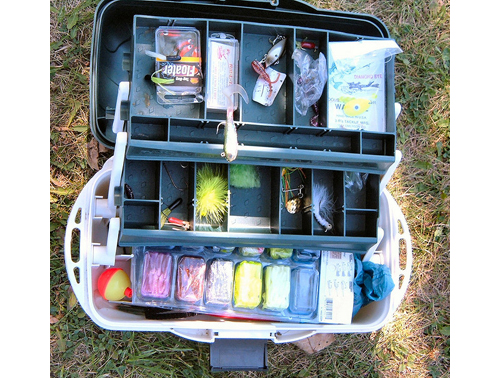Outdoors: Tackling fishing test lines

A few weeks ago we got a call from an editor to write a piece on scup, our favorite saltwater panfish, maybe our favorite fish, period. But the angle our friend wanted was not the typical one, e.g. porgies in the spring, porgies in the Peconics, etc. No, this was to be all about porgies on ultralight tackle.
What is really meant by “ultralight” tackle? What, in fact, distinguishes “ultralight” tackle from “light” tackle or “heavy” tackle, for that matter?
Back in the day when we were paying attention to record books, we rated tackle according to fish weights and ratios of true-line test to those weights. For example, if you took a 10:1 listing as “ultralight,” you would be fishing “12-pound” or six-kilogram test line — rated by the International Game Fish Association rules as line whose test doesn’t exceed 13.2 pounds — for denizens of the deep as large as 120 to 130 pounds.
Incidentally, unless a line is IGFA rated, it’s generally quite a bit stronger than the number listed on the spool. Many 12-pound lines really test around 16 pounds, so you usually buy six- or eight-pound test to keep the line “legal.” You could play this 10:1 game with billfish like white marlin, for example, and many Florida experts work this sort of magic with tarpon, too. But just try that ratio on the mackerel families whose bodies are much denser, fish with much less buoyancy! If a medium bluefin of 100 pounds stops swimming and quits, you will need at least 20 pounds of line strength to pump the fish to the surface! If you don’t believe this, take a look at the IGFA record books for the tunas; a ratio of five to one is about the best; should you call that “light” or “ultralight” tackle tuna fishing?
And getting back to those scup — a nice porgy would be a 14- to 15-inch fish going a little more than two pounds. Divide by 10 and you have lines testing less than a half-pound. No such lines exist! Indeed, if you’re looking at the little guys, the panfish, like porgies or winter flounder (remember them?), you probably have to go back to the early days of spinning tackle in freshwater and thread-rating in saltwater. In fact, when spinning gear first crossed “the pond” from Europe around or just after World War II, some editors like the great A. J. McClane referred to light tackle spin fishing for trout and bass as “threadlining.”
For saltwater fishing, each strand of thread (linen, early on), would be rated at around three pounds, so three-thread (12-pound test) was the lightest IGFA class and 39-thread (130-pound test) was the heaviest. When you fished trout or bass or even pike with lines under four-pound test, you were indeed playing an ultralight game by those standards, fishing with either spinning gear or very light casting reels designed for tournament casting. A mentor of mine managed a 15-pound pike upstate on just such a threadline outfit one spring, and he justifiably talked about it for years afterward.
Under the right conditions, we’ve had a lot of fun in the Peconics and on Long Island Sound with lines testing at or under four pounds. For shallow water work in reduced current flows, it’s great fun to ramp up the size of a smaller fish with sensitive gear. On two- to four-pound line, a “Boston” mackerel can make a little spinning reel spool turn into a blur, and a two-and-one-half-pound porgy can put any freshwater fish that size to shame.
You can have great fun with cocktail blues, but you run the risk of embarrassment if something much bigger ventures onto the scene. A skilled angler with sufficient line can stay with a teen-sized blue, to be sure, but it’s going to take a while to get the exhausted critter boatside, where it most likely cannot be revived and released.
Threadline has its limits where waters are deep or tidal currents are running hard. We’ve gone to downrigger rods with extra length and flexibility to extend our use of two- to four-pound lines to waters up to 60 feet and sinker weights of five ounces, and the technique does work, even if it seems a bit odd. We’ve pulled cod to six pounds, winter flounder to three-and-a-half pounds, and jumbo scup that way. A couple of times, we’ve watched would-be ultralight anglers get egg on their faces, trying the impossible, like, say, tautog on deep rock piles.
Similarly, we remember one angler trying four-pound test during a terrific bass bite one night in the Race. Score: stripers three, angler zero!
The late, talented Fred Fayal of Stonington set some spectacular bass marks years back in the two- and four-pound classes, we recall, but he was fishing in bays and harbors where you could “let ’em run.”
Yes, ultralight is great fun, but it has its place, too!








